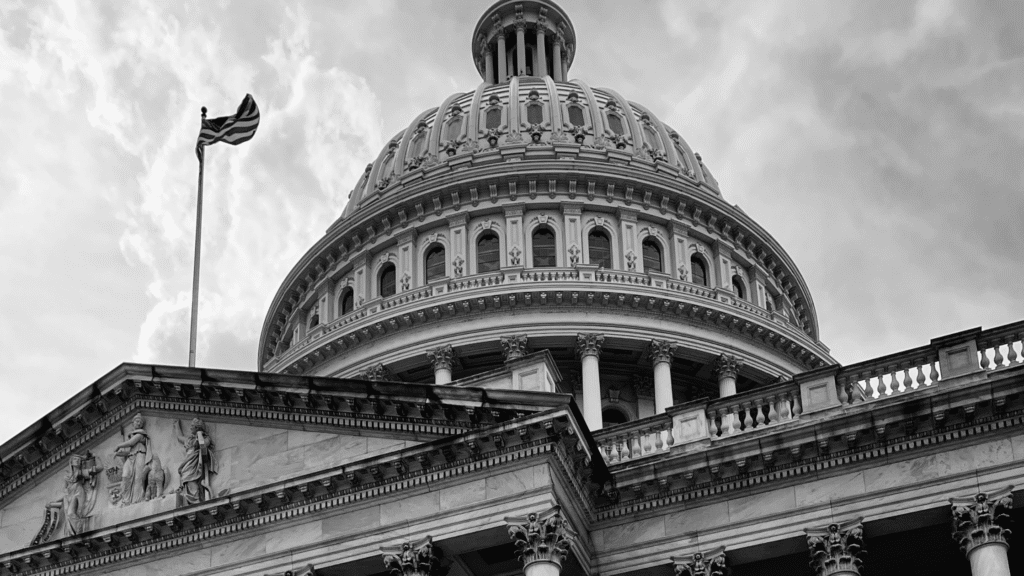Jump links:
What the One Big Beautiful Bill Means for 2026 Tax Policy
Retirement Planning Scenarios That Bring OBBB to Life
Why OBBB Makes Ongoing Tax Planning Essential for High-Income Families
Key Individual and Estate Tax Changes in the One Big Beautiful Bill
On July 4, 2025, Congress enacted and the President signed into law the One Big Beautiful Bill (OBBB), a sweeping tax package that cements much of the 2017 “Trump tax cuts” and layers on a series of new—but largely temporary—breaks. For sophisticated investors served by Aurelius Family Office (AFO), understanding how these rules reshape the tax landscape is essential. Here is a narrative guide to the key provisions that take effect in Tax Year 2026—and two hypothetical scenarios that illustrate how OBBB might ripple through your own financial plan. We focus on 2026 due to the complex charitable giving provisions in the bill that may impact clients like you. Many other provisions go into effect this year.
What the One Big Beautiful Bill Means for 2026 Tax Policy
Tax law is a living ecosystem; it is always changing. At AFO, we stay current with tax changes so you can keep more of what you earn—and more of your returns. Remember: our U.S. system is progressive, so as your income climbs, so does your tax rate. Under current law (without OBBB), the top 20 percent of taxpayers shoulder two-thirds of federal income taxes, with the top 1 percent footing 23 percent of the bill—already more than their share of total income.
With OBBB, the distribution of tax cuts shifts only slightly. According to the Wall Street Journal, the middle 20 percent of households pay about 10 percent of federal income taxes yet will receive roughly 13 percent of the new cuts. Historically, the top 20 percent has shouldered about 67 percent of the tax burden while receiving 60 percent of benefits—largely because higher-income and older households benefit from Social Security, Medicare, and various tax exclusions, according to the CBO (Congressional Budget Office).
Individual income taxes remain the largest source of federal revenue, underscoring how much the system depends on higher earners—even after accounting for deductions, credits, and preferential rates. In practice, many middle-income investors may see modest relief starting in 2026, while high-net-worth households may still receive the largest dollar savings, relative to the taxes they already pay.
If OBBB is viewed as an extension—or a sunset-avoidance—of the 2017 Tax Cuts and Jobs Act (TCJA) which were set to expire at the end of 2025, it continues the overall pattern of reduced tax burdens for higher earners. That said, the actual effect of OBBB is similar to the TCJA in most respects, with only incremental changes. Estimates of “winners” and “losers” can vary depending on the source, so it makes sense to treat them with a healthy dose of skepticism—just not the deductible kind. In general, AFO clients typically experienced lower federal income taxes under TCJA but higher state and local tax (SALT) costs. Under OBBB, we expect most moderate- to lower-income households will benefit the most, while many high-income taxpayers may see little net change.
Retirement Planning Scenarios That Bring OBBB to Life
Now, let us look at two retirement planning hypothetical scenarios that are representative of current AFO clients – and see how OBBB can be applied to their financial situation. First, we show a “2026 Baseline” as if there we no changes in the tax law, just a continuation of the 2017 “Trump Tax Cuts”. Then we focus on the potential impact for tax year 2026. See if one of these two stories sounds a bit like your own family’s situation.
Hypothetical Scenario #1: How OBBB Impacts Itemizing vs. Standard Deduction in 2026
Meet Bob & Mary Stone
- Lives in: Reston, VA
- Ages: 75 (both)
- Backgrounds: Bob spent his career in defense contracting; Carol was a public-school teacher.
As retirees, the Stones face the perennial question: should they continue itemizing deductions on Schedule A, or pivot to the now-enhanced Standard Deduction in 2026?
Their 2026 Baseline
- Standard deduction (married filing jointly): Projected $33,950 (including 2025’s cost of living adjustment).
- State & local taxes (SALT): $10,000 cap; they paid $19,000, only $10,000 was deductible
- Charitable gifts: $10,000
- RMDs (Required Minimum Distributions): $50,000 from IRAs, all taxable
- Social Security: $70,000 gross; 85 percent taxable = $59,500
- IRA QCD (Qualified Charitable Distributions): None in 2026 Baseline.
Together, their 2026 Baseline federal tax bill would have been $11,698.
What Changes with OBBB?
- Standard Deduction projected to increase to $35,488 (joint filers) in 2026. This includes the extra standard deduction for individuals age 65 and older and cost of living adjustment.
- SALT cap rises to $40,400 (phasing up 1 percent annually through 2029).
- Charitable floor is established at 0.5 percent AGI. However a new $2,000 “above-the-line” credit for cash gifts for those couples who do not itemize.
- The Stones will also receive an Enhanced Senior Deduction of $6,000 each. Not to be confused with the extra standard deduction noted above.
The Estimated 2026 Numbers
- Adjusted Gross Income (AGI): $122,300. This is down from $134,000, thanks to reduced Social Security taxation and a $8,000 QCD)
- Itemized deductions: $38,240 (driven by full SALT benefit)
- Standard Deduction: $31,500
- Qualified Charitable Distribution: $8,000
- IRA RMDs: Reduced to $42,000 after QCD
- Social Security taxable portion: 79 percent = $55,300
Result:
- Federal tax without QCD: $9,310 (versus $11,698 with the 2026 Baseline)
- Federal tax with $8,000 QCD: $7,937
- Total savings: $3,761 (including $1,373 from the QCD)
Key take-away:
Even for seasoned retirees, itemizing still wins when you optimize SALT deductions and employ QCDs— both important levers in retirement planning.. Consider bunching your charitable gifts in 2025 if needed, then lock in the richer itemized write-offs in 2026.
Hypothetical Scenario #2: SALT Deduction Cap Increase Under OBBB
Meet Ron & Carol Richards
- Lives in: Portland, ME
- Ages: 57 & 55
- Professions: Cybersecurity executives
- Household income: $425,000
- Salary: $380,000
- Taxable interest, dividends and investment capital gains: $35,000
- Withholding: $28,000
They’ve always itemized: mortgage interest, SALT, local property taxes, and a generous $20,000 annual gift to food-security charities in their home state of Maine.
Their 2026 Baseline
- Mortgage interest: $10,000
- SALT paid: $43,000 (but only $10,000 deductible prior to OBBB)
- Charitable gifts: $20,000
- Total itemized deductions: $40,000
- Federal tax liability: $78,370
What Changes with OBBB?
- SALT cap rises to $40,400 (after the 1 percent bump)
- Charitable deduction disallowance stays at 0.5 percent AGI (so they deduct $17,875, not the first $2,125 of their charity giving
The 2026 Numbers
- Itemized deductions:
- Mortgage interest: $10,000
- SALT: $40,400
- Charitable: $17,875
- Total: $68,275
- Taxable income after itemized deductions slashed by nearly $30,000
- Federal tax liability: $71,321
Key take-away:
Even after the new charitable limits, the expanded SALT cap delivers a net benefit—dropping Ron & Carol’s tax bill by more than $7,000.
For fun, we constructed hypothetical retirement planning outcomes for a couple with AGI of $875,000 to see how OBBB would impact their income taxes. Assuming they live in a high-income tax state, have a mortgage and are charitably inclined (likely to itemize their allowable deductions), they will end up paying slightly more in taxes. This is due to two key points, 1) their SALT deduction reverts back to $10,000 under the pre OBBB Law (due to having AGI in excess of $600,000) and 2) they can only deduct charitable contributions that exceed .5% of their AGI.
Why OBBB Makes Ongoing Tax Planning Essential for High-Income Families
“Tax law is always moving,” notes Greg Barishian, CFP®, CPA, a Director of Tax Planning at AFO who specializes in running detailed tax planning scenarios for AFO clients. While this was enacted in early July, regulations have to be put in play, with particular attention to the qualification of deducting tip and overtime premium income. “OBBB’s full economic impact won’t be clear for years, so annual tax planning is vital service we offer AFO clients.”
According to the Tax Foundation, lawmakers project a $5.0 trillion revenue shortfall from 2025–2034. On a dynamic basis—assuming 1.2 percent GDP growth—that declines to $4.1 trillion, before interest costs. Add a projected $917 billion in extra borrowing costs, and OBBB ramps up deficits by roughly $3.8 trillion through 2034.
Key Individual and Estate Tax Changes in the One Big Beautiful Bill
Below we’ve leveraged data from The Tax Foundation and organized the most investor-relevant changes into five categories. Consider these with your AFO team to gauge which levers to pull in your 2026 financial plan.
- Rate & Bracket Changes
- Make current brackets (10%, 12%, 22%) permanent and extend enhanced inflation adjustments one more year.
- Cement the elimination of personal exemptions.
- Make child tax credit permanent, boosting it to $2,200 in 2026 (inflation-adjusted thereafter).
- Standard & Senior Deductions
- Standard Deduction set at $31,500 (joint), $23,625 (head of household), $15,750 (others) in 2025, then inflation-adjusted.
- Add a temporary $6,000 “Senior Deduction” for each qualifying individual (2025–2028), phasing out above $75,000 AGI.
- Itemized Deduction Enhancements & Limits
- SALT cap rises to $40,000 in 2025, then +1 percent annually through 2029 (phase-out above $500,000 AGI).
- Cap mortgage interest deduction at $750,000 principal—made permanent.
- Limit the value of itemized deductions to 35 cents per dollar for top-bracket taxpayers.
- Permanently end “Pease” limitations on itemized deductions, except specific casualty or educator expenses.
- Charitable Giving & Specialized Deductions
- Starting in 2026, establish a 0.5 percent floor on itemized charitable deductions. For someone with $100,000 AGI, the first $500 of their charitable giving is not deductible.
- For those who do not itemize, add a permanent $1,000 above-the-line deduction for singles ($2,000 joint) for cash contributions made to eligible public charities.
- Allow qualified workers to temporarily permit deductions for up to $25,000 in tip income (2025–2028) and up to $12,500 in overtime premiums, phasing out by AGI thresholds.
- Temporarily allow up to $10,000 above-the-line deduction for auto-loan interest on U.S.-assembled new vehicles (2025–2028), phasing out by AGI thresholds.
- Estate & Gift Tax Changes
- Permanently raise the lifetime estate and gift tax exemption to $15 million (single) / $30 million (joint), inflation-adjusted, beginning 2026.
* For families anticipating business sales, relocations, or generational wealth transfers, proactive transition planning is key under OBBB.
Summary & Next Steps
According to the Tax Foundation, OBBB carries a price tag north of $4 trillion over ten years—and many of its provisions sunset or phase. It’s not true “fiscal reform,” but rather a blend of political promises on taxes and spending. Your most effective strategy will always be a disciplined, goal-driven plan that leverages permanent breaks today while positioning for expiring incentives tomorrow.Your most effective strategy will likely be a disciplined, integrated financial plan that leverages permanent breaks today while positioning for expiring incentives tomorrow. By mastering OBBB’s core provisions and how they might impact your annual tax planning—and by raising these topics with your Aurelius Family Office advisor—you’ll be best positioned to protect and grow your legacy. To explore how OBBB may shape your 2026 financial plan (and see an analysis of how a HNW couple’s scenario may be impacted by large charitable contributions in 2026), join us on August 26th at 1 PM EDT.
Disclosures
Aurelius Family Office, LLC (“AFO”) is an SEC-registered investment adviser. Registration does not imply a certain level of skill or expertise. This communication is for informational purposes only and is not intended to provide specific investment, legal, tax, or other professional advice. Investments involve risk of loss. AFO is neither an attorney nor an accountant, and no portion of this content should be interpreted as legal, accounting or tax advice. For information regarding AFO’s services, fees, conflicts of interest, and related matters, please review our Form ADV at https://adviserinfo.sec.gov/firm/summary/323016. Visit us at https://aurelius.net/.


